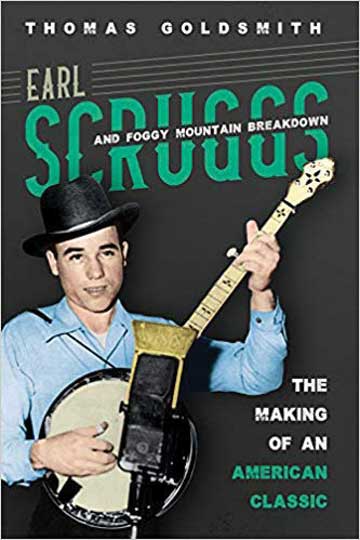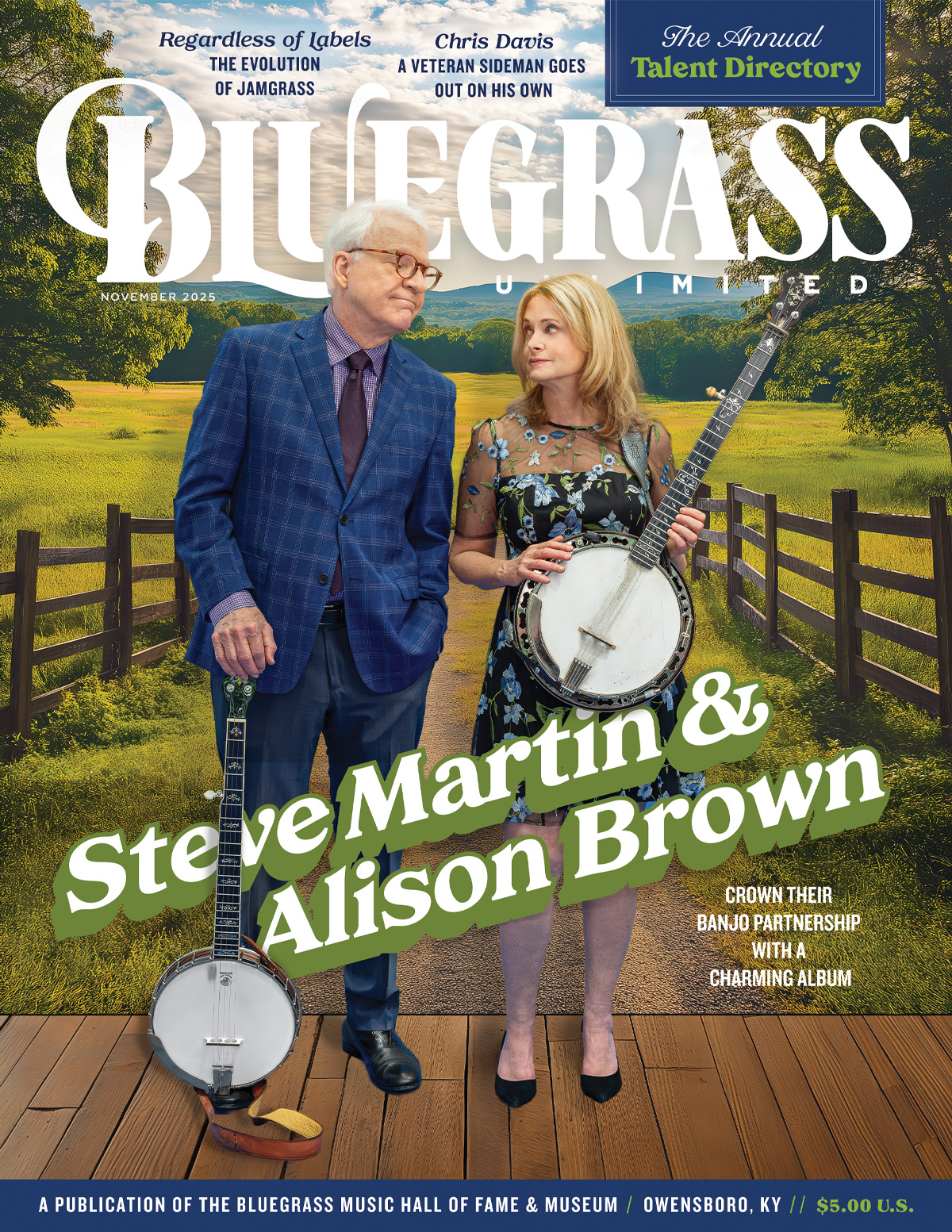EARL SCRUGGS AND FOGGY MOUNTAIN BREAKDOWN
 EARL SCRUGGS AND FOGGY MOUNTAIN BREAKDOWN: THE MAKING OF AN AMERICAN CLASSIC—BY THOMAS GOLDSMITH—Univ. of Ill. Press 9780252084782. Paperback, 200 pp., 12 b&w photos, $19.95. (Univ. of Ill. Press, 1325 S. Oak St., MC-566, Champaign, IL 61820, press.uillinois.edu.)
EARL SCRUGGS AND FOGGY MOUNTAIN BREAKDOWN: THE MAKING OF AN AMERICAN CLASSIC—BY THOMAS GOLDSMITH—Univ. of Ill. Press 9780252084782. Paperback, 200 pp., 12 b&w photos, $19.95. (Univ. of Ill. Press, 1325 S. Oak St., MC-566, Champaign, IL 61820, press.uillinois.edu.)
This is a fairly short but rather remarkable book in which veteran music journalist Thomas Goldsmith, a former winner of IBMA’s Print Media Person Of The Year award, uses one signature song to intricately chronicle the musical evolution of one of American popular music’s most innovative figures.
Early on in this thoroughly footnoted yet eminently readable study (which is part of the University of Illinois Press’s Music In American Life Series), Goldsmith reminds us of the influence and importance of the instrumental “Foggy Mountain Breakdown,” which Scruggs wrote and first recorded with Lester Flatt in December 1949: “Recorded in that basic studio in Cincinnati, the tune has won singular status through the years. In just a few examples, honors came in 2000 from National Public Radio, which named ‘Foggy Mountain Breakdown’ one of the 100 most important American musical works of the twentieth century. On April 5, 2005, Librarian Of Congress James H. Billington named ‘Foggy Mountain Breakdown’ to the National Recording Registry, denoting recordings that are ‘culturally, historically, or aesthetically significant.’ And it’s the only tune to win two Grammys in performances by the same artist.”
Goldsmith’s depiction of Scruggs’ humble upbringing in the late 1920s and ’30s and his early exposure to “the rural, almost primal music of the Carolina Piedmont” is evocative. So is his analysis of Scruggs’ (and longtime partner Lester Flatt’s) complicated and often tense relationship with Bill Monroe, both during and after Flatt’s and Scruggs’ celebrated 1945-1948 tenure in Monroe’s Blue Grass Boys, which is now considered the veritable Big Bang of bluegrass music.
On the other extreme, Goldsmith’s detailed musical analyses—in terms of keys, tempos, chord shifts, coloring, picking techniques, and the like—are described with the clarity and precision that only someone like Goldsmith, an accomplished musician as well as an incisive writer, could bring to them. This book should prove indispensable to students of the banjo, whether raw beginners or ultra-advanced. It should have similar appeal to dedicated bluegrass fans who want to take a deep dive into the banjo sound, style, and technique that Scruggs made not only famous, but timeless and legendary.BA
